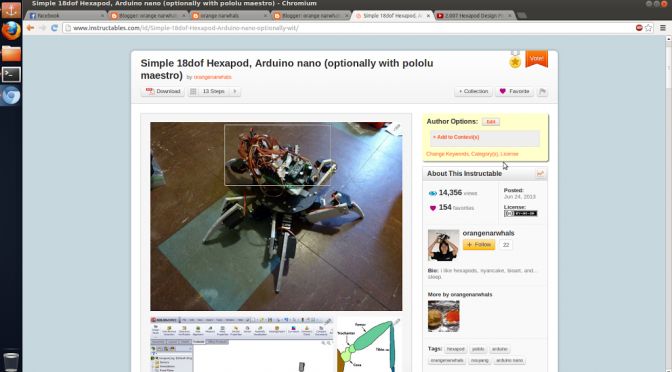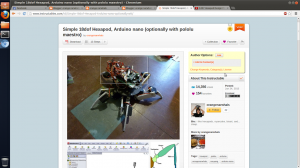Hanna Lin and I are going to make kiwikart, a kiwi-drive go-kart. We are going to make two versions, a brushed motor 80-20 version and a brushless motor bamboo version.
Research so far:
Previous omni kart:
Previous bamboo go-kart:
Now for motor and gear ratio (sprocket) selections.
We chose 3x 6” wheels and 3x 4” wheels (for the cheaper brushed 80-20 version). We chose aluminum for the first one because it seemed more durable, and plastic for the latter because the Al version only holds 80lbs per wheel while the plastic version holds 120lbs per wheel. We picked kiwi drive instead of four-wheel drive because it’s much cheaper. (each brushless motor+wheel+controller assembly is upwards of 200 dollars).
http://www.andymark.com/product-p/am-0381.htm (plastic 4” dualie)
http://www.andymark.com/product-p/am-0903.htm (aluminum 4” dual omni wheel)
We also were trying to decide between a 3:1 and 4:1 ratio. Later we found out that for the 4” wheels at least we can’t get a 4:1 ratio because the sprocket is bigger than the wheels.
Max acceleration calculations:
[K_t = (K_v* frac{2 pi}{60})^{-1} [Nm/A]]
where $K_t = 236 ; rpm/V$ from hobbyking motor specifications (http://www.hobbyking.com/hobbyking/store/__18126__Turnigy_Aerodrive_SK3_5065_236kv_Brushless_Outrunner_Motor.html)
[K_t = (236* frac{2 pi}{60})^{-1} = 0.0405 ; Nm/A]
[tau_{max} = K_t I_{max}$ where $I_{max} = 50 ;A]
($I_max$ comes from the controller we selected, http://kellycontroller.com/kbs48121l50a24-48v-mini-brushless-dc-controller-p-1172.html)
Additionally, we know that
[tau_{max} = F*r = m*a*r] where $r$ is $radius$
Thus,
[accel = frac{tau_{max}}{mr} = frac{2.03; Nm}{3 ; inches 200 ; lbs}]
where the radius of the wheel is 3” and the cart we estimate to be about 60 lbs with a rider weight of 140 lbs. Plugging into wolfram alpha or google we get
[ accel = frac{2.03}{0.076*90.7} = 0.29 m/sec/sec]
Finally, we account for the fact that, in a kiwi drive, while going forward we are only using 2 of 3 motors and the forward direction of motor force is only 70% ($sin 60 = sqrt{3}/2$). We also need to take the 4:1 or 3:1 gear ratio into account.
Thus,
$accel = raw-accel * 2 * 0.7 * 4 = 1.6 ; m/sec/sec$ or about $1.6 / 9.8 = 0.16 ; g’s$ of acceleration. In other words, 3.67 mi/hr/sec or going from 0 to 60 mph in 16 seconds. Brisk but not award-winning, but should feel plenty fast on a low-to-the-ground go-kart.
=========
Max speed calculations:
[Omega_{motor} = V_{sys} K_v [rpm]]
The motor can handle 37 volts so we picked 36 volts for the system voltage. As before, the $K_v$ is 236 rpm/V.
[Omega_{motor} = 36 * 236 = 8496 rpm = 141.6 ;rev/sec]
[v_{ground} = frac{141.6 rev}{sec}* frac{2 pi r}{rev} * frac {1}{K_{gear}} * 0.7 * 0.7]
where the 0.7 is for the forward efficiency again. We do another factor of 0.7 for cruising speed instead of no-load speed.
[v_{ground} = frac{141.6 rev}{sec}* frac{2 pi * 0.076}{rev} * frac {1}{4} * 0.49 = 17.5 ; mph]
=========
That’s it so far. We’re using the same motors as chibikart, which are the lower $K_v$ in the SK3 50 mm class at 236 $K_v$. The wheels as mentioned before (100 dollars each for 6” wheels), #25 chain, and sprockets to be determined. We’re using kelly controllers KBS series that can handle 50 A 36V at $150 each. Whew. Okay, a lot more information to come, but a quick braindump for tonight.






